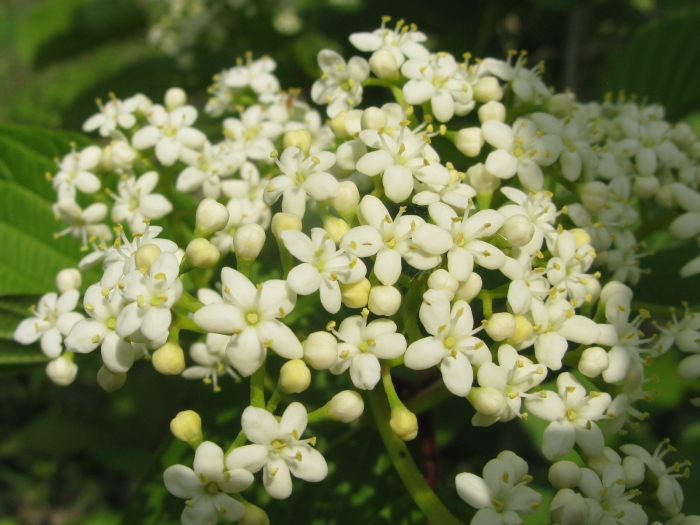Siebold’s Viburnum
(Viburnum sieboldii)
Siebold’s Viburnum (Viburnum sieboldii)
/
/

Qwert1234
CC BY-SA 3.0
Image By:
Qwert1234
Recorded By:
Copyright:
CC BY-SA 3.0
Copyright Notice:
Photo by: Qwert1234 | License Type: CC BY-SA 3.0 | License URL: https://creativecommons.org/licenses/by-sa/3.0 | Uploader: Qwert1234 | Publisher: Wikimedia Commons | Title: Viburnum_sieboldii_var._obovatifolium_2.JPG | Notes: Uploaded own work with UploadWizard |



































































Estimated Native Range
Summary
Viburnum sieboldii, commonly known as Siebold’s Viburnum, is a deciduous shrub or small tree native to the forested regions, mountainous areas, and woodlands of Japan. It typically grows to a height of 15-20 feet (5-6 meters) and a width of 10-15 feet (3-4.6 meters), featuring a rounded form with stout, brittle stems. The leaves are opposite, simple, and broad, contributing to a dense foliage canopy. In spring, Siebold’s Viburnum produces showy clusters of creamy white flowers, which are followed by red berries that mature to black, providing seasonal interest and attracting wildlife.
Siebold’s Viburnum is valued for its ornamental flowers, attractive berries, and its ability to adapt to a range of soil conditions. It is used in gardens and landscapes for border planting, as a specimen plant, or for naturalizing in woodland settings. This plant prefers full sun to part shade and requires medium amounts of water, thriving in soils with varying drainage rates. While generally low-maintenance, it can be susceptible to viburnum leaf beetle and powdery mildew. Pruning is recommended to maintain its shape and promote healthy growth.CC BY-SA 4.0
Siebold’s Viburnum is valued for its ornamental flowers, attractive berries, and its ability to adapt to a range of soil conditions. It is used in gardens and landscapes for border planting, as a specimen plant, or for naturalizing in woodland settings. This plant prefers full sun to part shade and requires medium amounts of water, thriving in soils with varying drainage rates. While generally low-maintenance, it can be susceptible to viburnum leaf beetle and powdery mildew. Pruning is recommended to maintain its shape and promote healthy growth.CC BY-SA 4.0
Plant Description
- Plant Type: Tree, Shrub
- Height: 15-20 feet
- Width: 10-15 feet
- Growth Rate: Moderate
- Flower Color: Cream, White
- Flowering Season: Spring
- Leaf Retention: Deciduous
Growth Requirements
- Sun: Full Sun, Part Shade
- Water: Medium
- Drainage: Slow, Medium, Fast
Common Uses
Bee Garden, Bird Garden, Border Plant, Butterfly Garden, Deer Resistant, Edible*Disclaimer: Easyscape's listed plant edibility is for informational use. Always verify the safety and proper identification of any plant before consumption., Fragrant, Hedges, Hummingbird Garden, Low Maintenance, Rabbit Resistant, Street Planting
Natural Habitat
Forested regions, mountainous areas, and woodlands of Japan
Other Names
Common Names: Siebold’s Arrowwood, Siebolds Arrowwood
Scientific Names: , Viburnum sieboldii, Viburnum sieboldii var. reticulatum, Viburnum reticulatum, Viburnum sieboldii subsp. reticulatum, Viburnum sieboldii var. longifolium,
GBIF Accepted Name: Viburnum sieboldii Miq.